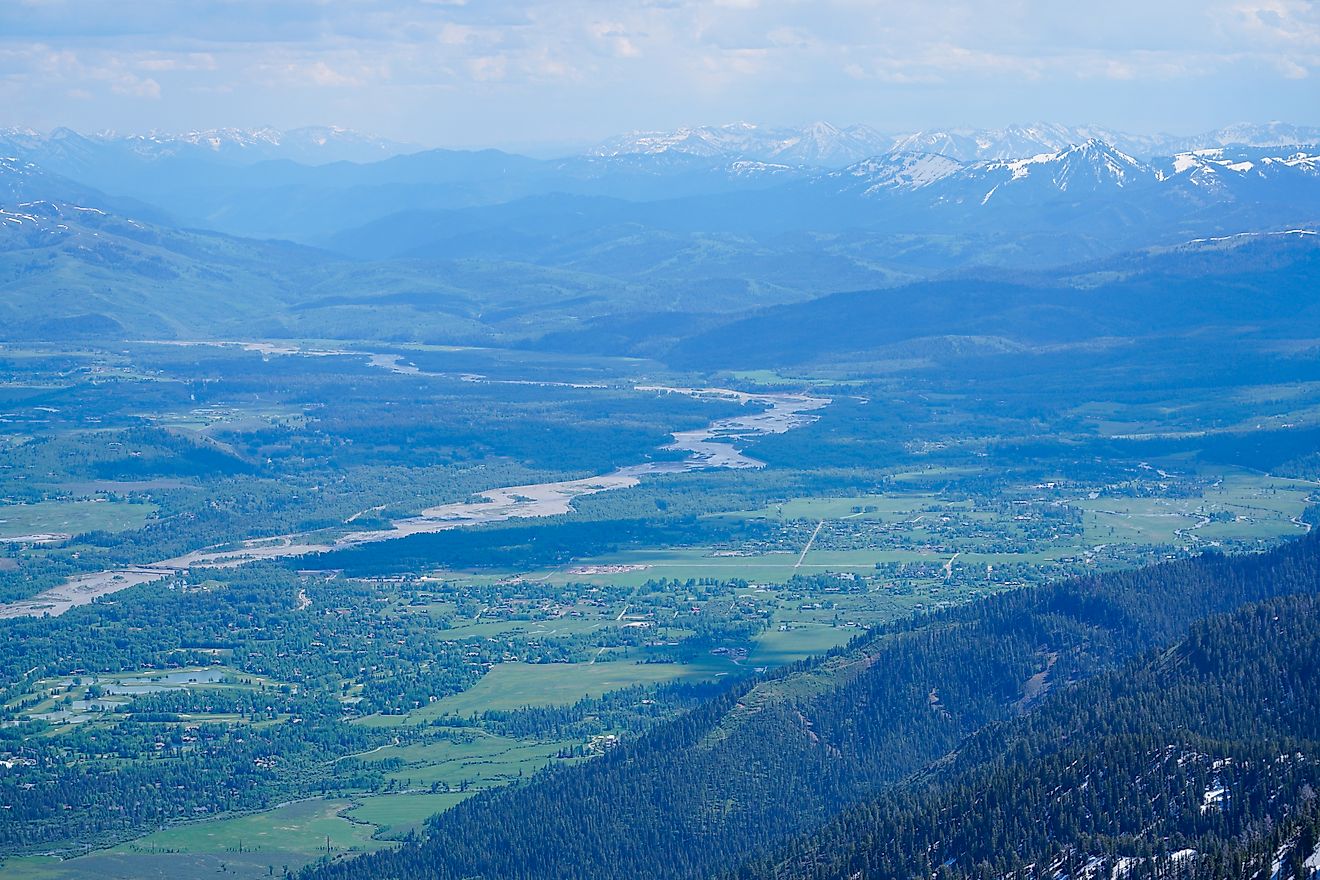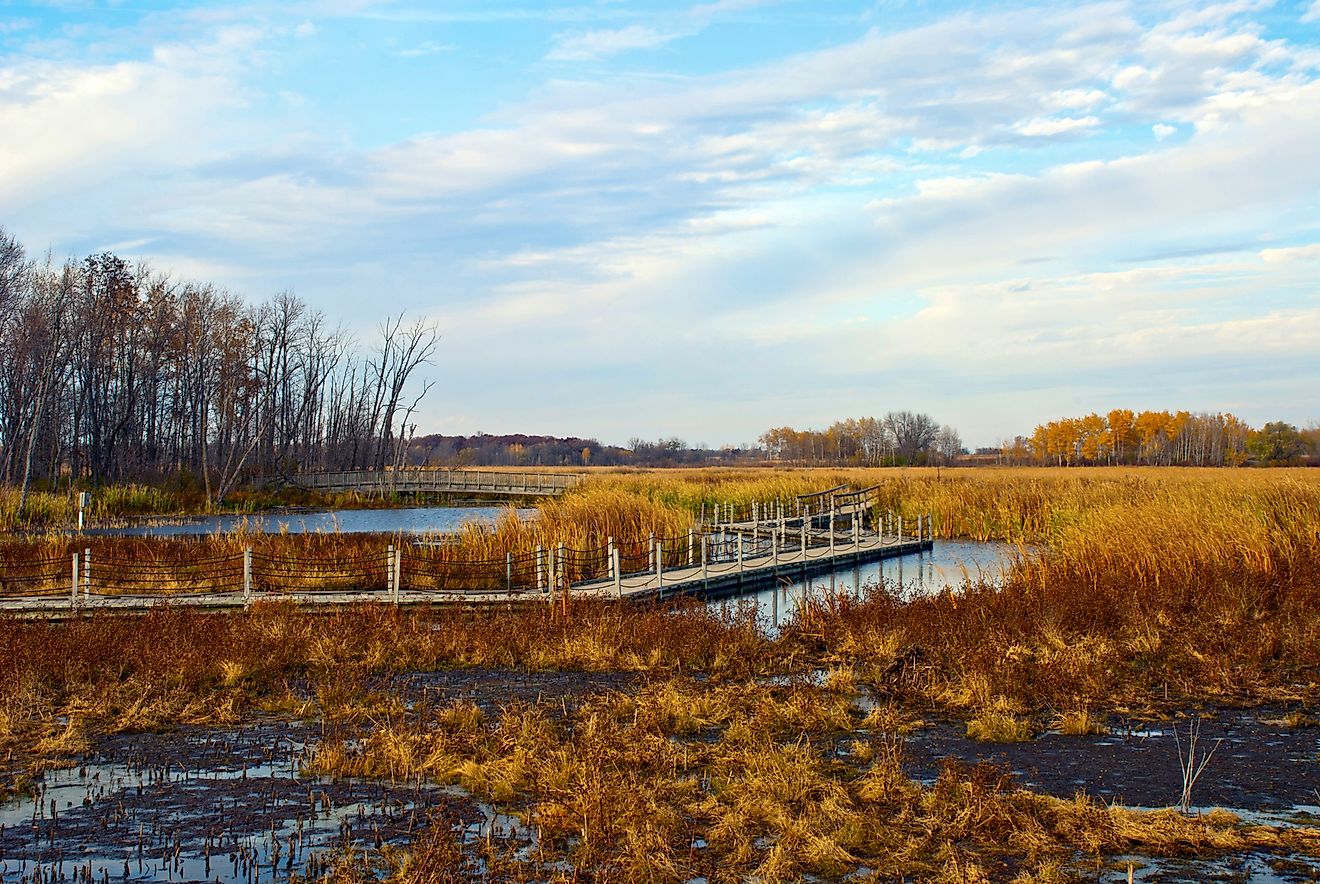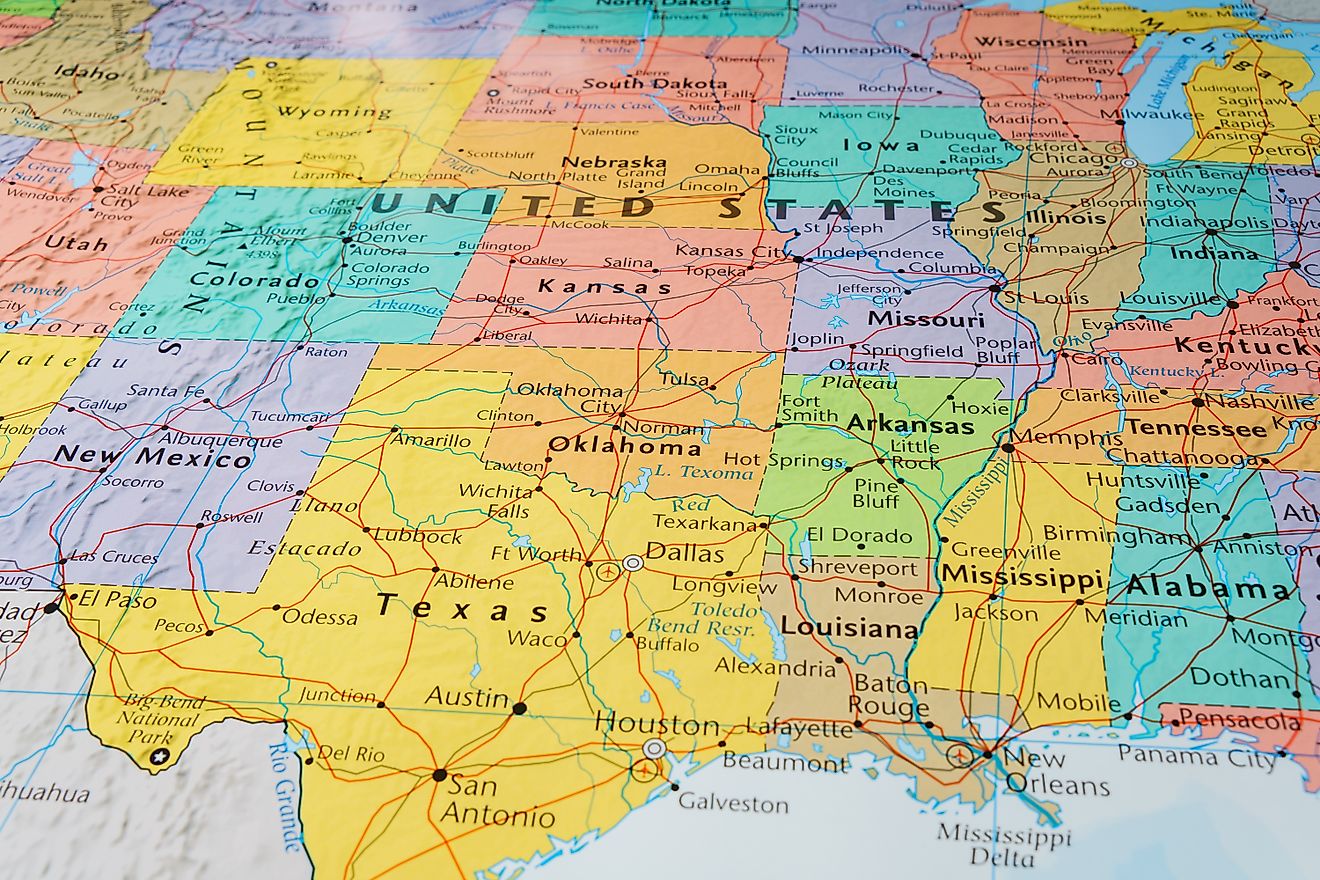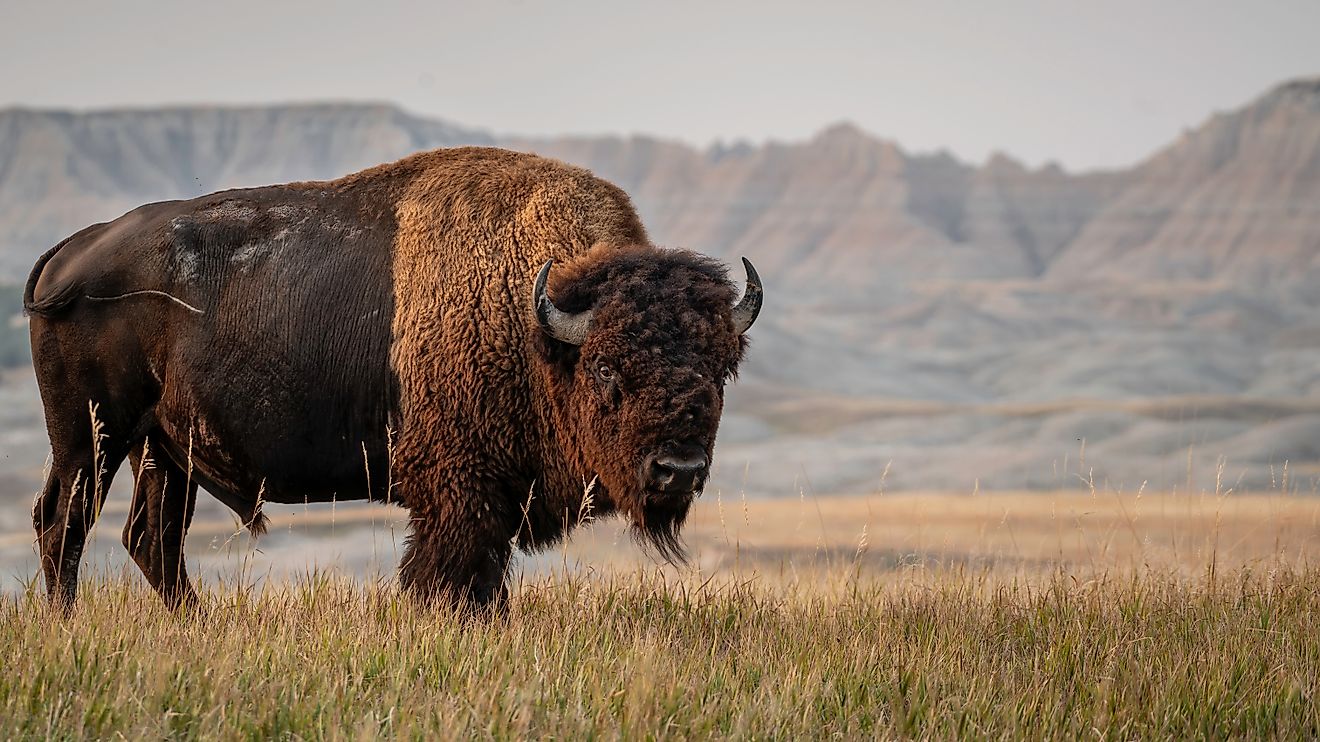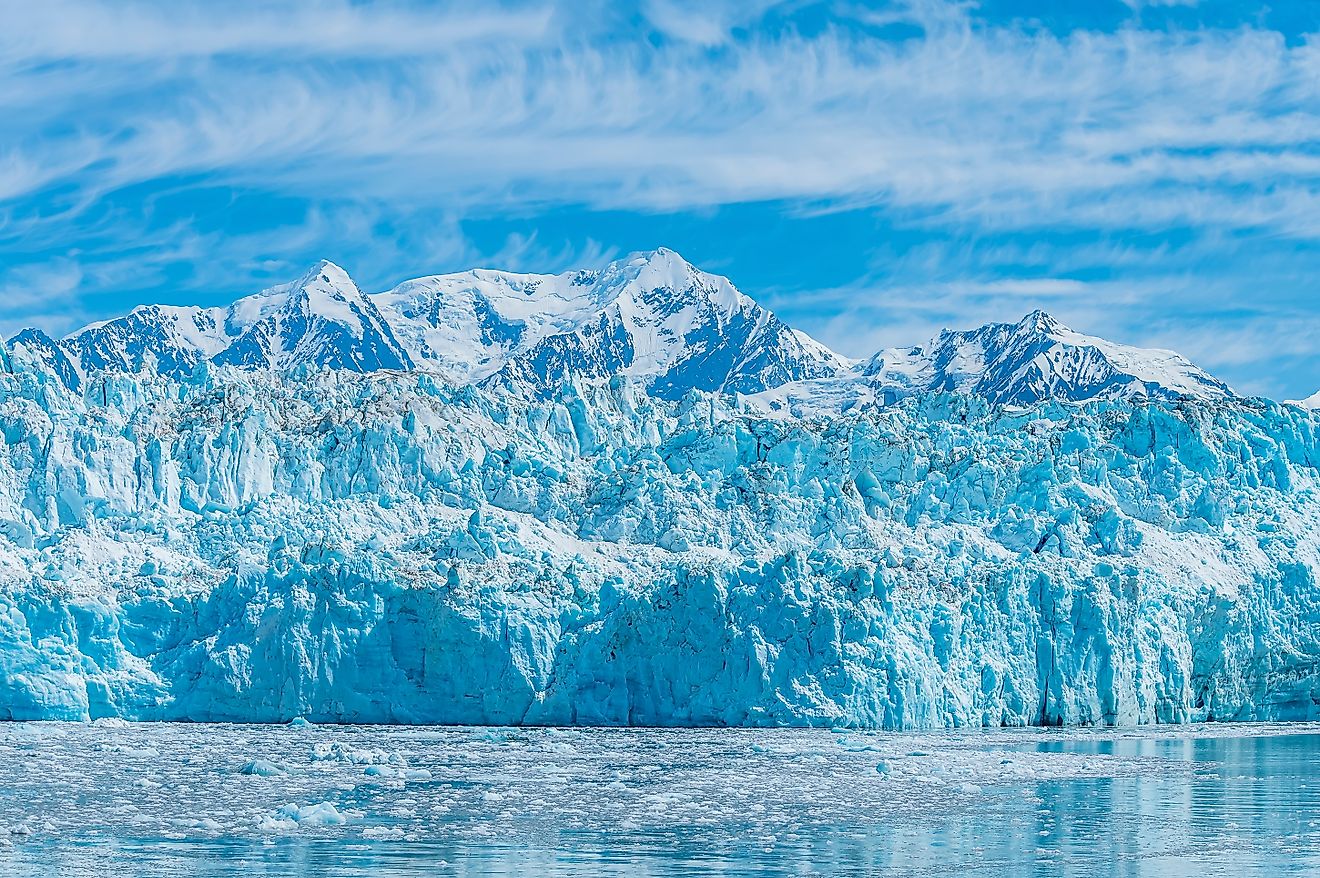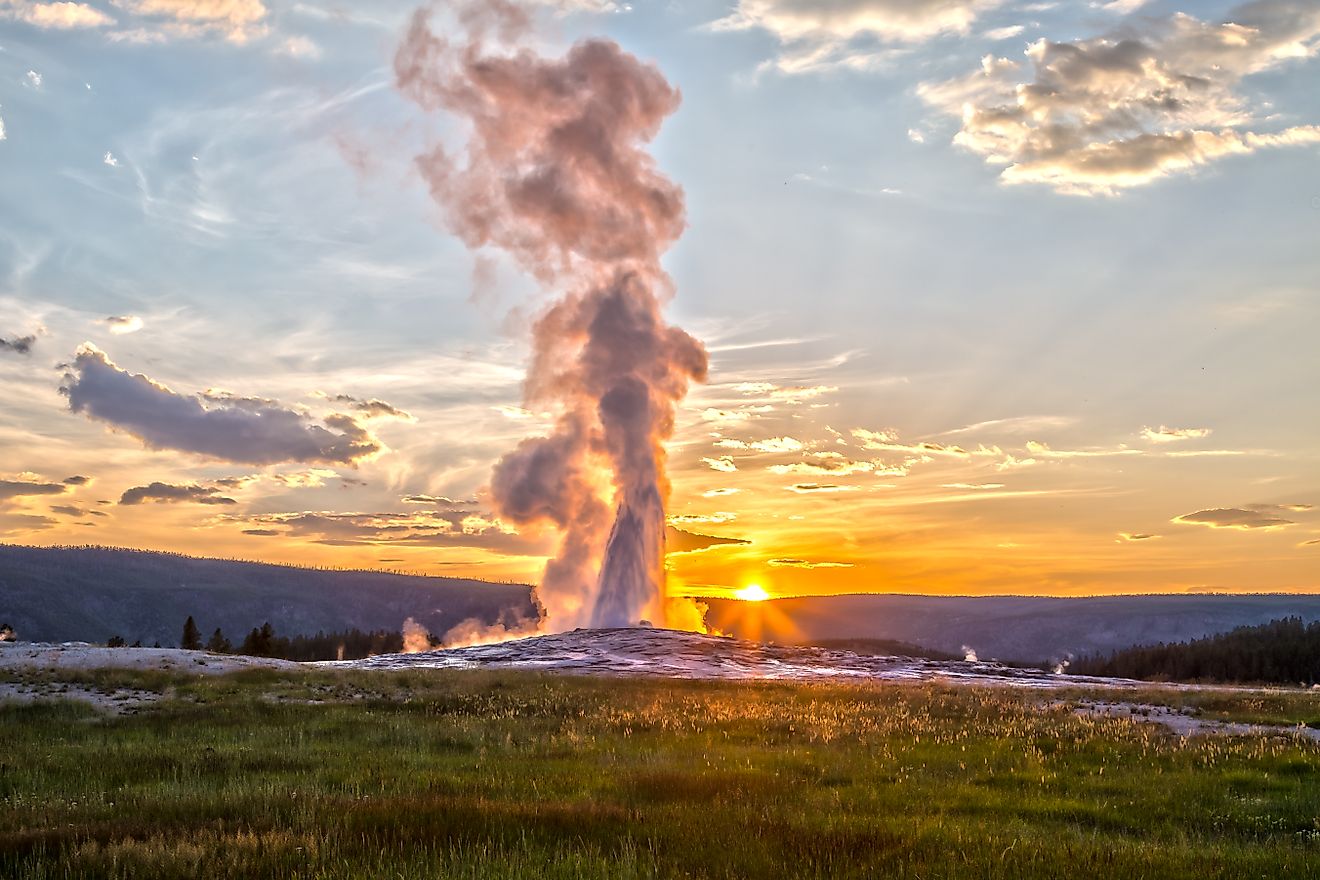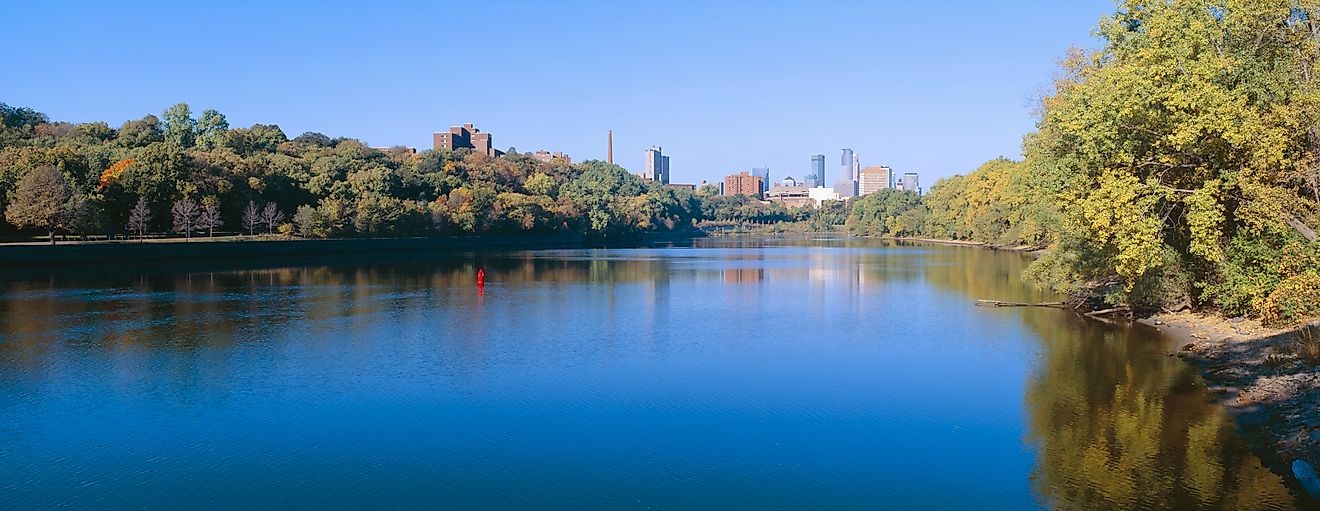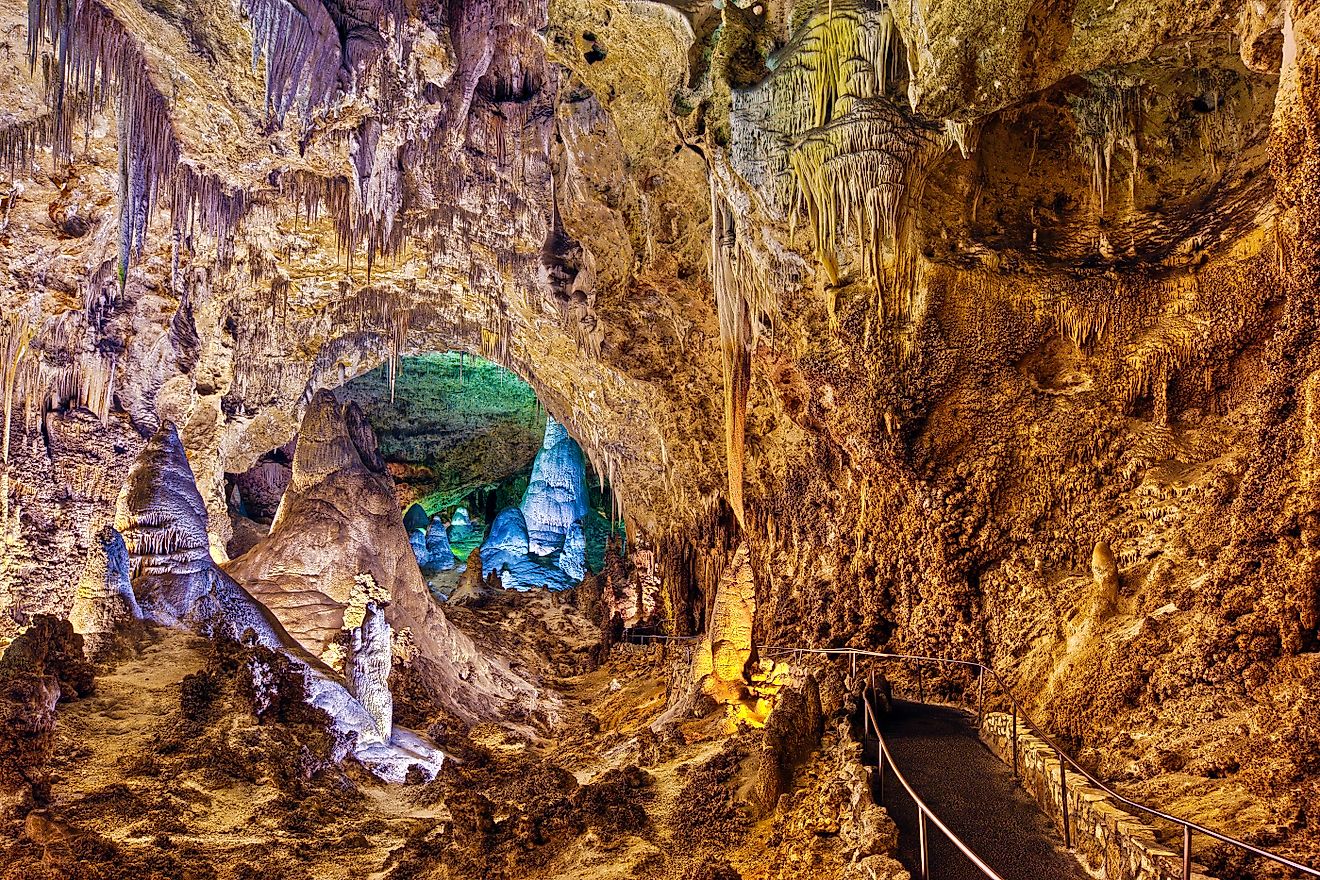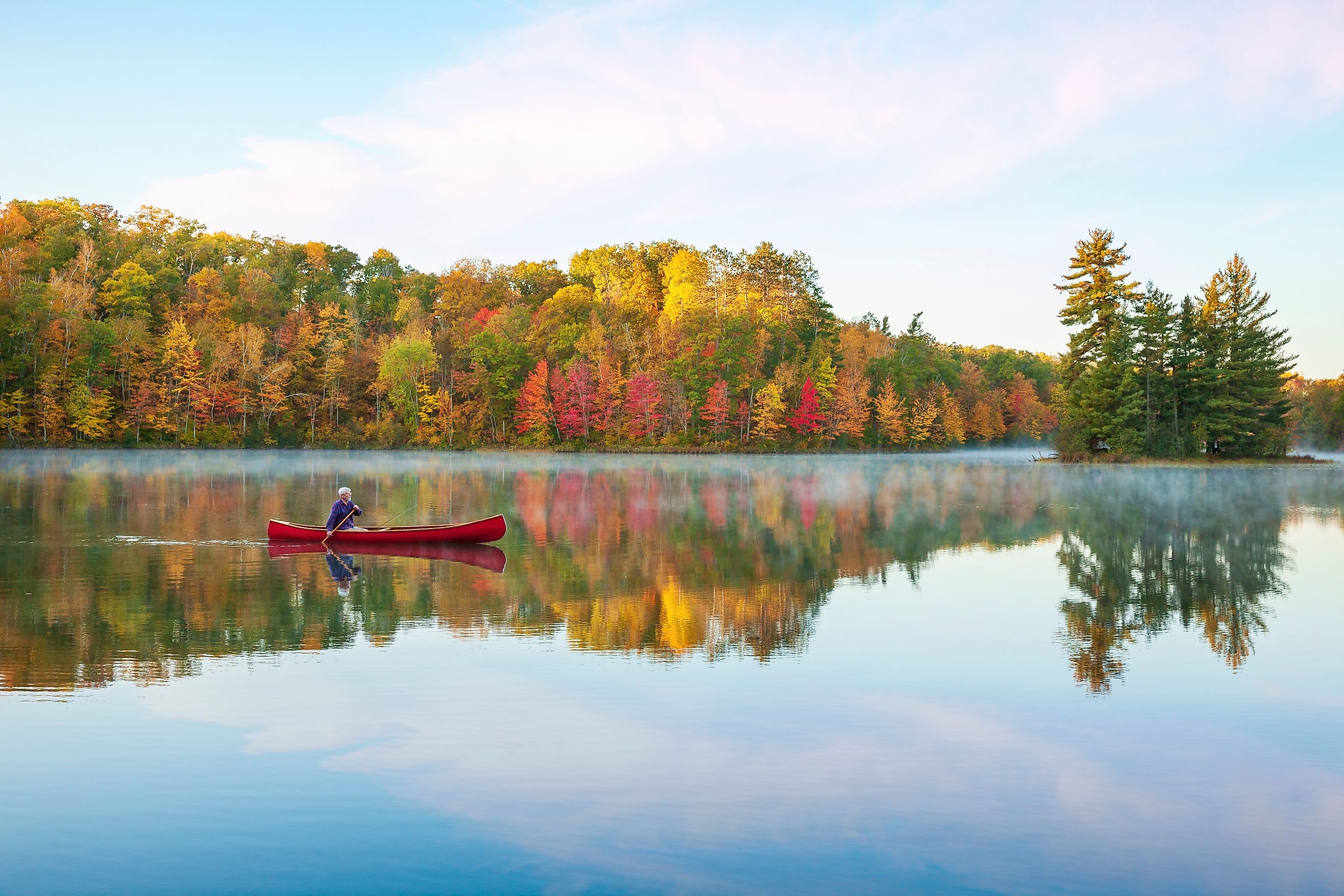
The Largest Lakes Entirely Within One US State
Across the American landscape, lakes define states as much as mountains or coastlines. Some stretch across borders, like Lake Tahoe, shared by two states. Others exist entirely within one, forming natural boundaries, ecosystems, and recreation hubs all their own.
These inland waters tell stories of glacial retreat, volcanic activity, ancient floods, and human engineering. They sustain wildlife, support industries, and shape regional identities. These five lakes stand out for their size, their ecological importance, and the cultures that have grown along their shores.
Great Salt Lake, Utah
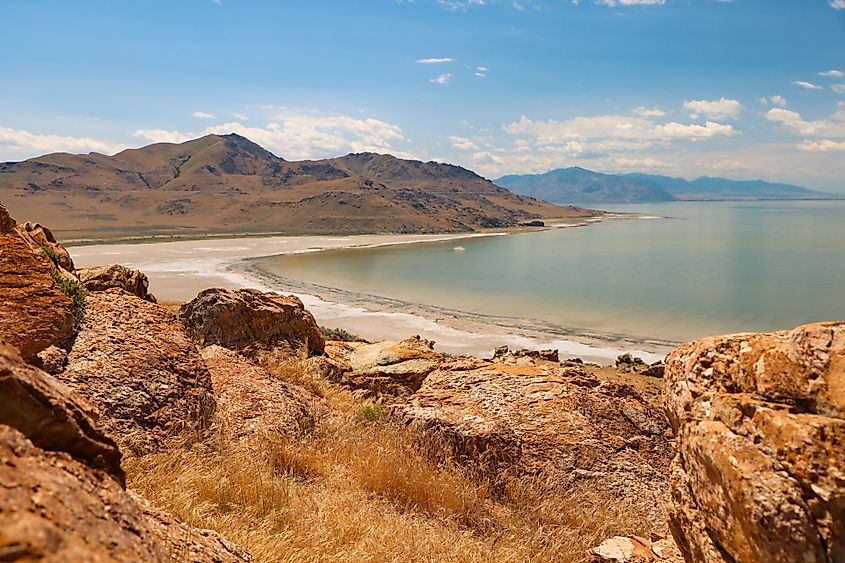
-
Average depth: 14 feet
-
Maximum recorded surface area: 1,700 square miles
-
Primary inflows: Bear, Weber, and Jordan Rivers
-
Outlet: None, water leaves only through evaporation
Stretching across the northern reaches of Utah, the Great Salt Lake is a body of water so vast it is visible from space. At its fullest, it covers more than 1,700 square miles, though its size fluctuates dramatically with rainfall and evaporation.
The lake is a remnant of prehistoric Lake Bonneville, a massive inland sea that once covered much of the Great Basin. What remains today is a shallow, mineral-rich expanse that has become a vital habitat for millions of migratory birds. The high salinity, ranging between 5 to 27 percent, makes the water inhospitable to most fish but ideal for brine shrimp, which form the base of a vast food chain.
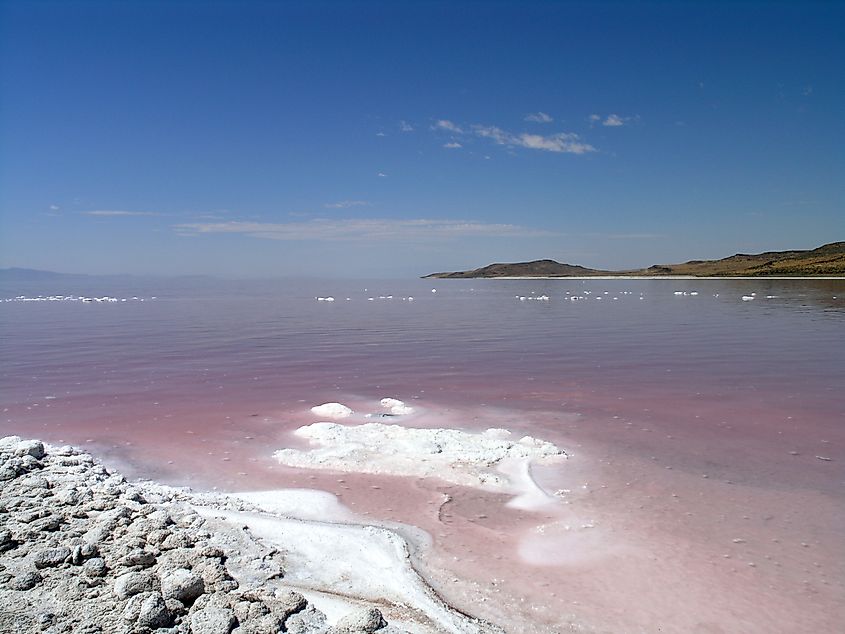
The shores of the Great Salt Lake hold a distinct, otherworldly beauty. Antelope Island, one of its most prominent landmarks, offers sweeping desert vistas framed by reflective waters. Salt flats and mineral crusts paint the edges of the shoreline, creating surreal scenes that shift with light and season.
Yet the Great Salt Lake faces environmental challenges. Prolonged drought, upstream water diversion, and a warming climate have led to a sharp decline in water levels. Scientists warn that continued shrinkage could expose toxic lakebed sediments and threaten Utah’s air quality. Efforts are underway to conserve inflows and stabilize the lake’s ecosystem.
Iliamna Lake, Alaska
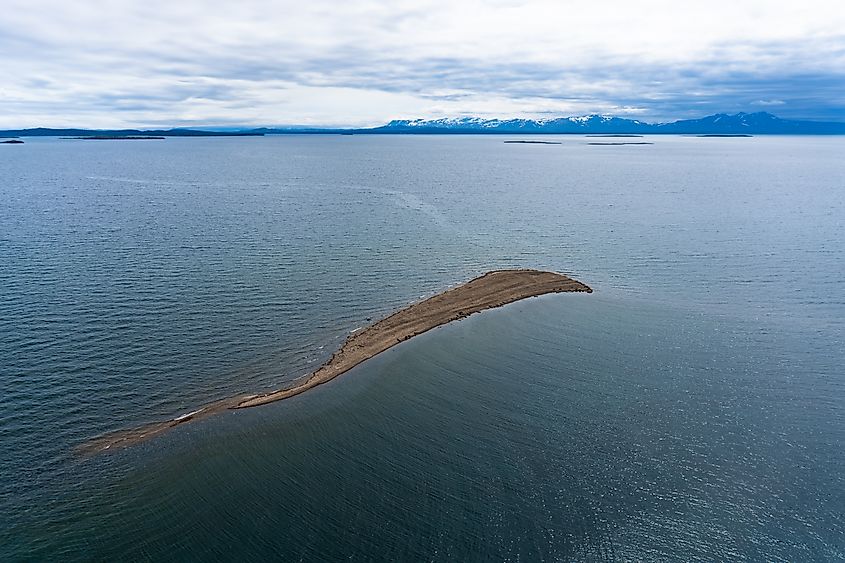
-
Length: 77 miles
-
Width: 22 miles
-
Average depth: 144 feet
-
Known for: Sockeye salmon runs and freshwater seals
In the vast wilderness of southwest Alaska, Iliamna Lake reigns as the largest freshwater lake contained entirely within a single state. Spanning roughly 1,000 square miles, it is more than 70 miles long and 20 miles wide, with depths reaching nearly 1,000 feet in some areas.
Formed by glacial and tectonic processes, Iliamna is part of the rich hydrological network that feeds Bristol Bay, one of the world’s most productive salmon fisheries. Each year, millions of sockeye salmon migrate through the lake’s waters, providing a critical food source for bears, eagles, and rural communities that depend on subsistence fishing.
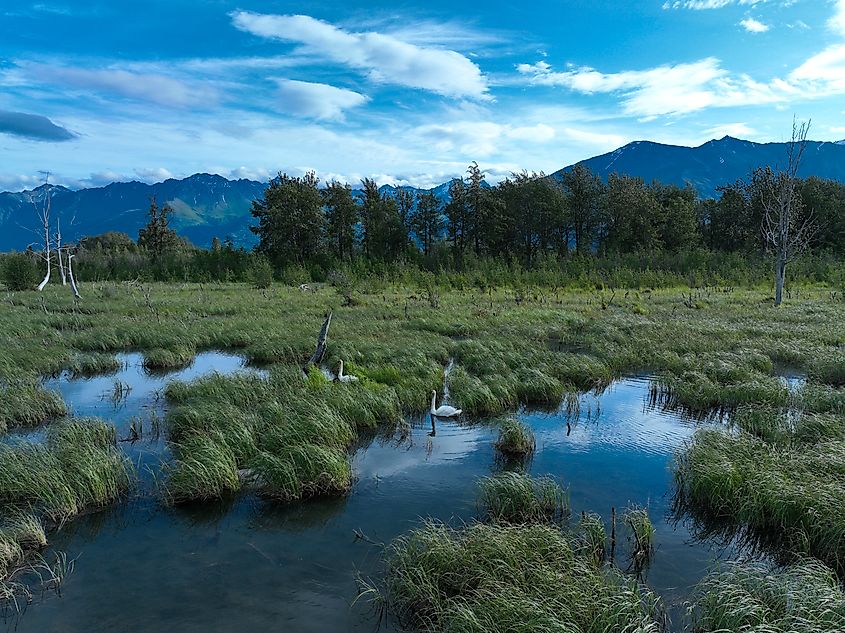
The lake is home to freshwater seals, one of the few populations known to live permanently in an inland lake. Scientists debate their origins, some believe they became trapped thousands of years ago during post-glacial isolation. These seals, along with Iliamna’s pristine clarity and remote setting, lend the area an air of mystery.
For Alaska Native villages, Iliamna has long served as a lifeline. The lake supports transportation in winter when it freezes over, and sustains cultural traditions tied to the rhythms of fishing and migration.
Lake Okeechobee, Florida
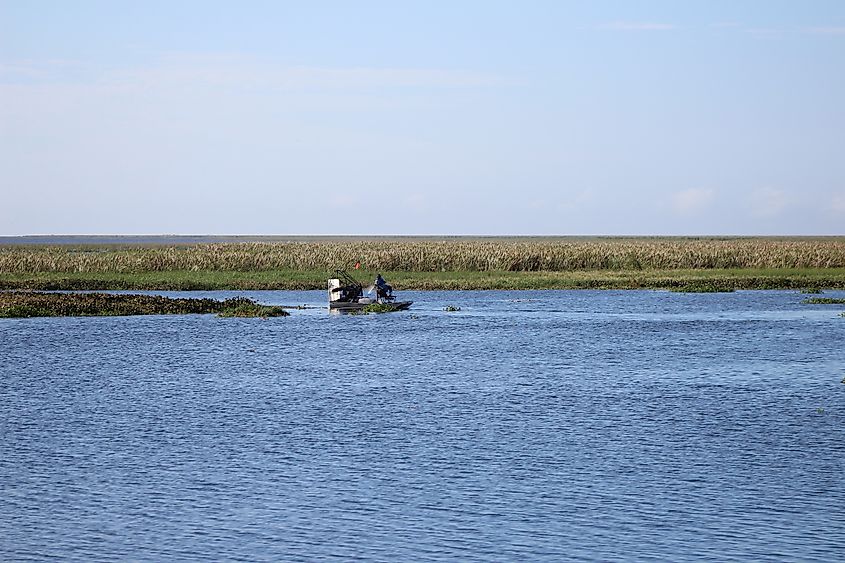
-
Surface area: 730 square miles
-
Average depth: 9 feet
-
Primary inflows: Kissimmee River
-
Outflow: Everglades via canals and water management structures
At the heart of southern Florida lies Lake Okeechobee, a sprawling freshwater expanse that plays a central role in the state’s ecosystem and economy. Covering approximately 730 square miles, it is often referred to as the “liquid heart” of Florida.
Okeechobee is both a natural lake and a managed reservoir. It feeds the Everglades, supports agriculture, and provides flood control through a complex system of canals and levees. The lake’s circular shape and shallow depth create challenges for water management, particularly during hurricane season when heavy rains can push water levels dangerously high.
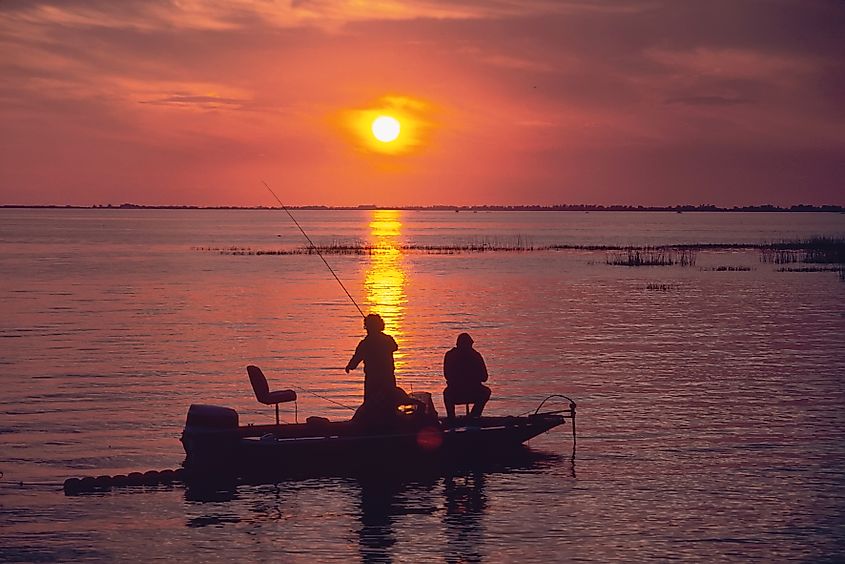
Beyond its role in infrastructure, Okeechobee supports an intricate web of life. Largemouth bass, crappie, and bluegill thrive here, drawing anglers from across the country. Its marshy fringes shelter herons, egrets, and endangered snail kites, while cypress and sawgrass wetlands filter water flowing south toward the Everglades.
The lake’s name comes from the Hitchiti words “oki” and “chubi,” meaning “big water,” a fitting description of a lake so large it influences regional weather patterns. Over the past century, human intervention has reshaped Okeechobee’s natural flow, creating ongoing debates about restoration and sustainability.
Red Lake, Minnesota
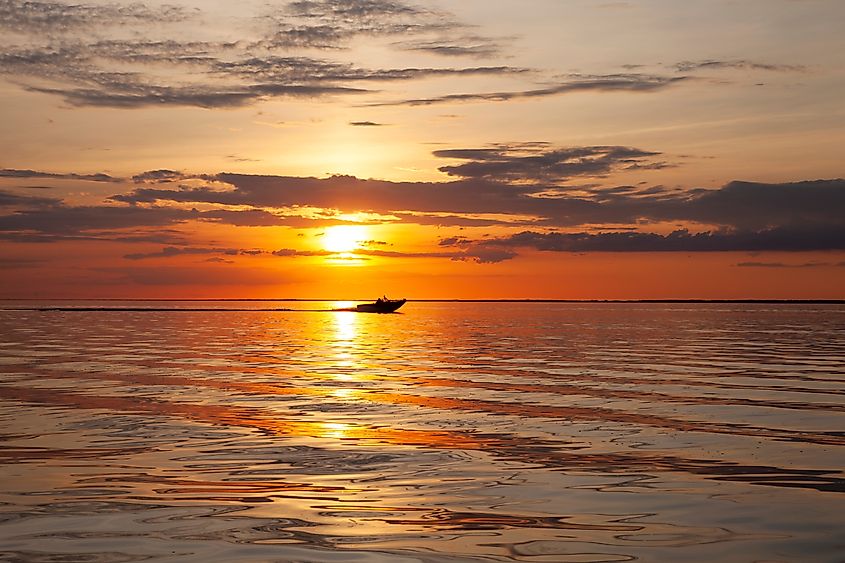
-
Combined surface area: 440 square miles
-
Maximum depth: 35 feet
-
Managed by: Red Lake Band of Chippewa Indians
-
Known for: Walleye fishing and tribal conservation efforts
Northern Minnesota is home to countless lakes, but Red Lake stands apart. Divided into Upper and Lower Red Lake, it forms the largest natural freshwater lake entirely within the state, covering roughly 440 square miles.
The lake lies within the Red Lake Indian Reservation, making it one of the few major bodies of water in the US fully under Native American jurisdiction. For the Red Lake Nation, it serves as both an economic anchor and a cultural foundation. The lake supports one of the Midwest’s most successful walleye fisheries, carefully managed by the tribe after a period of overfishing in the late 20th century.
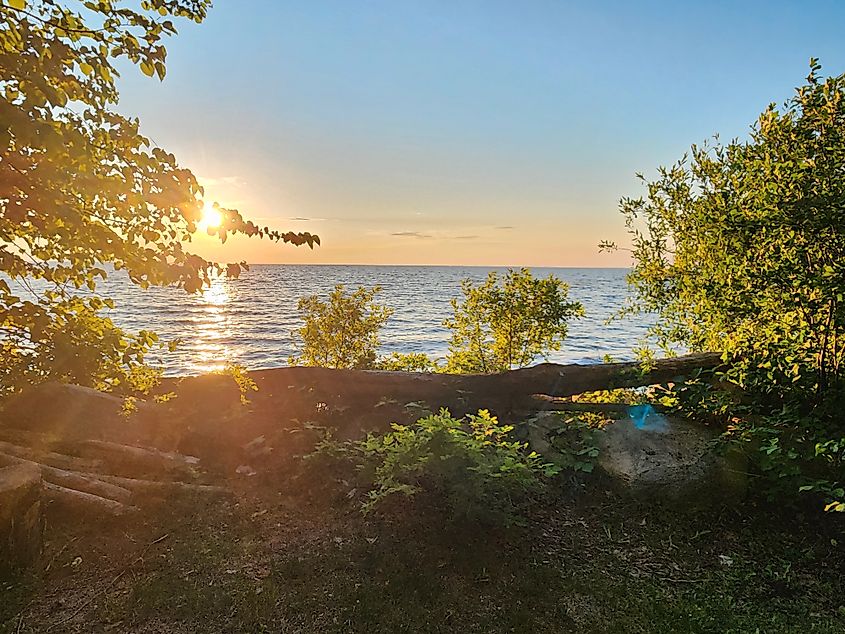
Winter transforms Red Lake into a hub for ice fishing, drawing anglers across the frozen expanse in pursuit of walleye and northern pike. Beneath the surface, the ecosystem thrives, balancing traditional fishing practices with modern conservation techniques.
Beyond its biological and cultural roles, Red Lake’s isolation adds to its intrigue. With no natural outlet, its water levels depend on precipitation and groundwater inflow. That hydrological quirk gives the lake a unique rhythm tied directly to northern Minnesota’s weather cycles.
Lake Winnebago, Wisconsin
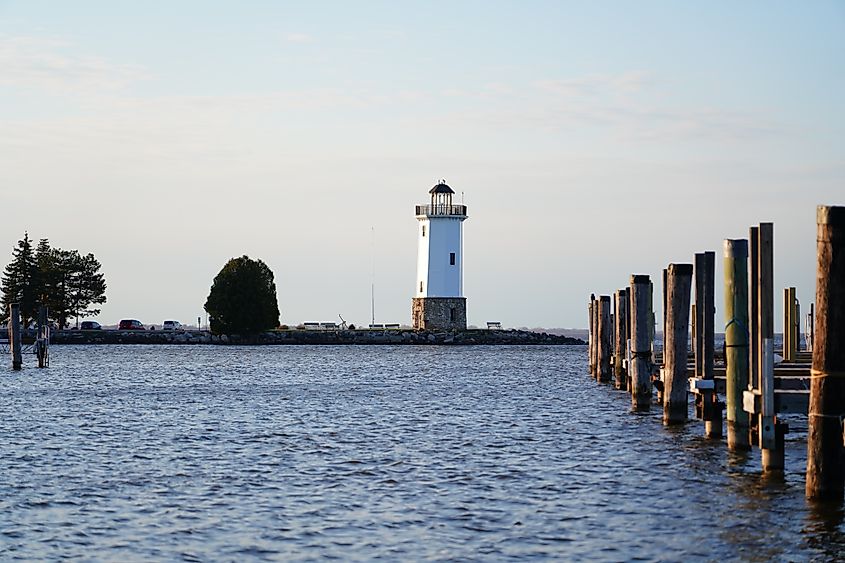
-
Surface area: 215 square miles
-
Average depth: 15 feet
-
Known for: Sturgeon spearing and walleye fishing
-
Connected waterways: Fox and Wolf Rivers
Located in east-central Wisconsin, Lake Winnebago is a broad freshwater basin that spans about 215 square miles, making it the largest lake entirely within Wisconsin’s borders. Formed by glacial melt thousands of years ago, it serves as the heart of the Fox River Valley region.
Winnebago plays a major role in Wisconsin’s recreation and economy. Its waters host thriving populations of walleye, perch, and sturgeon, and the annual sturgeon spearing season is a cultural highlight that draws participants statewide. Few lakes in North America sustain a sturgeon population as strong as Winnebago’s, thanks to decades of careful conservation.
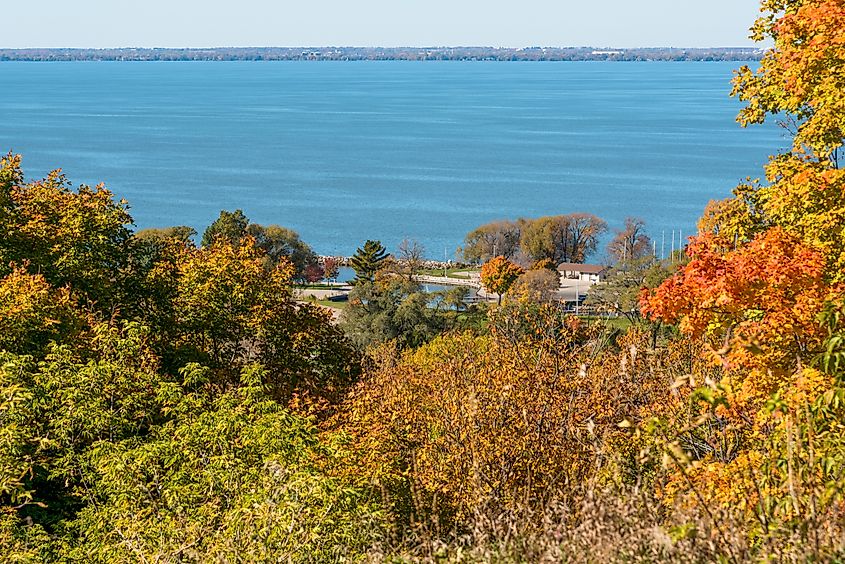
The lake’s gentle slopes and shallow depths create excellent conditions for boating and sailing. On windy days, whitecaps sweep across its surface, a familiar sight for locals who live along its western and eastern shores.
Ecologically, Lake Winnebago is part of a larger chain that connects to Lake Michigan via the Fox River. Water quality initiatives have been critical in recent years as nutrient runoff from agriculture threatens to increase algae blooms. State and local programs continue to focus on restoration and sustainable watershed management.
America’s Inland Giants
The nation’s largest in-state lakes prove that scale and beauty are not limited to coastlines. Each one anchors the landscape around it, shaping weather, wildlife, and the rhythm of life nearby. These waters reflect how nature’s vastness can exist quietly, without the need for borders or tides.
Across their surfaces, time feels slower. Wind patterns carve new stories, and migrating birds trace the same paths their ancestors followed centuries ago. In their depth lies the essence of America’s geography. These inland giants endure as mirrors of the country itself: restless, resilient, and never still.
Largest Lakes in One State
| Lake | State | Surface Area (sq mi) | Average Depth | Primary Feature |
|---|---|---|---|---|
| Great Salt Lake | Utah | 1,700 | 14 ft | Largest saline lake in Western Hemisphere |
| Iliamna Lake | Alaska | 1,000 | 144 ft | Freshwater seals and salmon habitat |
| Lake Okeechobee | Florida | 730 | 9 ft | Central to Florida’s water management |
| Red Lake | Minnesota | 440 | 35 ft | Largest entirely within Minnesota |
| Lake Winnebago | Wisconsin | 215 | 15 ft | Thriving sturgeon and walleye populations |
